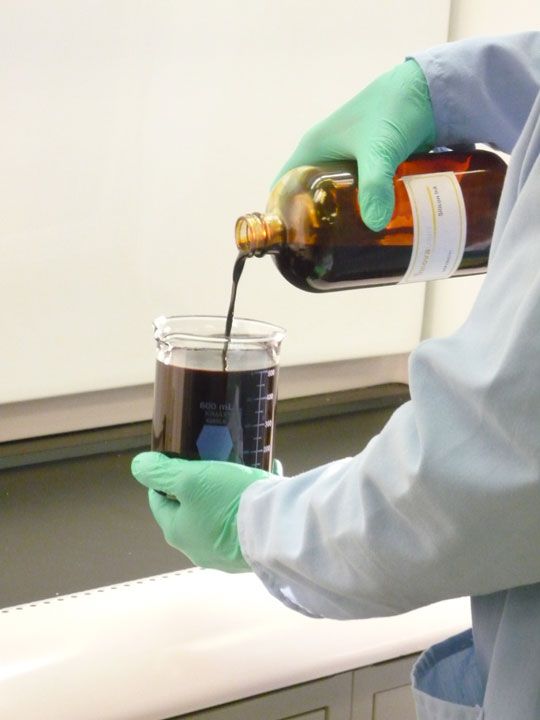Innovalight, which makes solar cells by printing what it calls "silicon ink," said Tuesday its cells can convert 18 percent of sunlight that his them into electricity.
Both the National Renewable Energy Laboratory and the Fraunhofer Institute for Solar Energy Systems verified the cells' efficiency, Innovalight said. Innovalight's cells came from its 10-megawatt pilot production line it installed earlier this year, a company spokesman said.
That efficiency figure refers to the best cells the company could produce instead of the average efficiency of cells coming out of the production line, which generally is lower.
Still, the achievement will boost Innovalight's ability to market its technology, which is moving toward commercialization. Solar electricity in general is still more expensive than coal-based power, so making highly efficient solar energy equipment at low costs is the ultimate goal for any solar company.
Most of the silicon solar cells on the market today have efficiencies around the mid-teens while thin-film manufacturers hover around the 10 percent mark or lower. Thin-film solar cells, say advocates, cost less because the manufacturing processes are less onerous: thin films ideally are more like making window coatings than memory chips. Innovalight essentially is aiming at marrying thin-film-like manufacturing concepts with the crystalline work ethic.
There are a handful of companies that can make highly efficient silicon cells from their factories, notable among them is SunPower. The San Jose, Calif.-based company has been mass-producing cells with 22 percent efficiency for the past two years, said SunPower spokeswoman Helen Kendrick.
China-based Suntech Power has boosted its cell efficiency using a new technology it calls Pluto. The best Pluto cells could achieve 18.8 percent (see Suntech Claims New World Record in Silicon Panel Efficiency). Suntech started shipping panels assembled with Pluto cells earlier this year.
Sunnyvale, Calif.-based Innovalight, founded in 2002, is taking a novel approach to depositing silicon, the key ingredient for converting light into energy, than the larger players in the market.
Unlike other companies that process silicon as a solid material or a gas, Innovalight said it has figured out a way to use silicon in a liquid form. Using the silicon ink could speed up solar cell production rate, and the process promises to cut manufacturing costs, Innovalight said. The company has declined to disclose manufacturing costs.
Instead of making and selling solar cells or assembling them into panels for sale, however, Innovalight has changed its strategy in the last nine months to focus on licensing its manufacturing process and selling the silicon ink, said Conrad Burke, CEO of Innovalight. The change lowers the company's expenses and creates opportunities at a time when the industry has too much production capacities.
"We have a healthy business that would generate revenues from selling printing ink technology to existing solar cell manufacturing companies," Burke said.
Innovalight would contract with factory equipment makers to fabricate the tools; OTB Solar is one the tool makers.
The company has six solar cell customers, though Burke declined to disclose their names. Innovalight is in the advanced design or pilot-production phases with its customers, he added. The company's technology could be inserted into its customers' existing manufacturing process without replacing any steps, Burke said. By adding a layer of silicon ink, the solar cell makers could improve their products' efficiency by "a couple of percentage points," Burke said.
Innovalight currently has a factory to produce 100 megawatts of silicon ink, he said. The goal is to boost that production to 1 gigawatt.
Most of the solar panels on the market today are made with silicon, which fetched high prices only a few years ago. Prices for silicon have come down significantly, by as much as 50 percent, in the past year as demand for solar energy products slowed and a significantly inventories have been built up by solar companies worldwide (see Solar Panel Glut Could Last Until 2012, Says Report).
As a result, solar cell and panel makers also have cut the prices of their products by as much as 50 percent. Instead of more than $4 per watt for the panels, the wholesale prices now hover around $2 to $2.50 per watt.
How the new market dynamics affect Innovalight remains to be seen. In June this year, the company said silicon ink printing equipment could make ultra-thin solar cells that are almost four times thinner than conventional cells
Innovalight is backed by venture capital investors including Arch Venture Partners, Apax Partners, Convexa Capital, Harris & Harris and Seven Rosen Funds. The company has raised $40 million to date, Burke said.

Innovalight has developed a silicon ink for boosting the efficiency of solar cells.